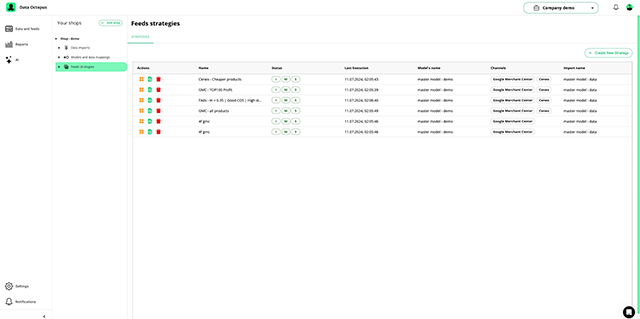
Seasonal campaigns
Sale periods like Black Friday, Cyber Monday or Christmas sales are harvest time for e-commerce. However, price reduction alone is definitely not enough. Success in seasonal campaigns lies in a well-thought-out product segmentation strategy and precise ad targeting. Not every product should be treated the same – they differ in margin, popularity, results in advertising systems and even availability in stock. Based on each of these data, we can segment products. Proper identification of these factors and adaptation of advertising campaigns to them is crucial.
In this article, we will show you how to create effective segmentation based on, among other things, data from your Master Model. Using our predefined segmentation strategies and product labels, which we provide in the Data Octopus application as part of the Product Field Library, will also prove invaluable – but more on that later in this article.
During sales periods, customers are particularly price-sensitive, but also sensitive to special offers, bundles, and seasonal novelties. Therefore, each brand/store must develop a comprehensive strategy covering different product segments, advertising channels, and purchase paths.
The strategies below were built using fields from our Master Product Data Model, which combines basic product feed data with data from Google Analytics 4, Google Ads, MetaAds, the e-commerce engine, and additionally sent imports. You can find its schema here here.
Preliminary analysis and segmentation
The starting point is an in-depth look at past sales performance. Key metrics include:
Bestsellers products:
- Dane:using labels such as GA4 Sellers, GAds Sellers or Revenue Segment to identify historical bestsellers and gain general insight into product rankings based on revenue generated.
- Use:Products that have enjoyed the greatest popularity in the past have the greatest potential to repeat success.
High margin products:
- Dane:To make such data fully reliable, it is best to send it to the Data Octopus application via an additional import, e.g. in the form of a Google sheet, in order to then assign individual products to the margin ranges they are in and segment them on this basis (Margin Segments from the Product Fields Library).
- Use:High-margin products are more profitable, especially during sales when you can reduce the price and still make a satisfactory profit.
Seasonal products:
- Dane: google_product_category, category, title, brand, description
- Use:Products related to the holiday season (e.g. decorations, gifts) should be promoted more intensively during this time. This allows for the creation of detailed campaigns, e.g. for a specific brand, category.
Advanced product segmentation
Segmentation based on user activity data:
Products frequently added to cart but not purchased:
- Dane: ga4_item_add_to_cart_event, ga4_item_check_out_event, ga4_item_purchase_quantity
- Use:These products require additional support, e.g. by adding special promotions.
Products that are frequently searched for but have low conversion:
- Dane: year_impressions, year_clicks, year_conversions
- Use:Analysis of these products may indicate issues with the description, pricing, or landing page.
This allows you to identify key product groups for different seasonal campaigns.
Segmentation based on advertising data:
High ROAS/low COS products:
- Dane:ROAS Segment (Segmentation based on generated ROAS from Product Fields Library).
- Use:Products that generate the highest return on investment should receive a larger budget.
High conversion products:
- Dane: year_conversions
- Use:Products that easily translate into sales are ideal for promotion.
Additional tips:
- Testing:Regularly testing different ad variants and campaign settings is key to achieving the best results.
- Personalization:Try to personalize your ads as much as possible, e.g. through remarketing or using lookalike audience lists.
By combining user activity, historical and advertising data, we can create precise product segments and tailor campaigns to specific business goals. Regular analysis and optimization of campaigns will allow you to maximize sales during the holiday season and during sales.
Strategy Library
It is worth taking into account what we deliver as part of our strategy when planning Strategy Library, or a library of ready-made, predefined segmentation strategies and product labeling based on data. Many of the strategies listed above are already there and ready to use, as well as offering the possibility of personalization and adjustment to your own business needs. The only thing you need to take care of is the appropriate “input” data. The more of it there is (e.g. knowledge about margin, profit, stock status, competitiveness of product prices), the more advanced segmentation is possible. We have a separate extensive article on this topic articlein ourHelp Center,which is definitely worth getting acquainted with.
Some of them are:
- Margin Segment – product segmentation based on margin
- Price Segment – segmentation of products based on price
- Revenue Segment – product segmentation based on generated revenue
- Zombie – marking products based on their views and availability
- Delivery Time Type – marking of products based on their delivery time
Additional strategies
Additionally, our other article can also provide inspiration, presenting inspiration for advertising strategies. Some of them may prove helpful during this period:
- Division of products by warehouse “type”– own stock/fulfilment/dropshipping – labeling products and calculating the result at the label level. In 90% of cases, things from your own stock sell better and more effectively, so it’s worth directing larger budgets there.
Products from our own stock will probably also have much faster delivery, which may prove crucial during pre-holiday shopping, where time plays a major role. - Sale /low stock– marking the products that you want to “push” out of the warehouses and, based on data from GA4/GAds, extracting the products that were the most effective and then placing them in other campaigns with a dedicated budget.
The number of products (and their sizes, variants) that we have in stock is also a significant factor to consider when making decisions depending on what products we want to advertise, display, and discount. Additional discounts on the last sizes can be a good idea, but it is worth being careful not to spend too much money on products that will soon be out of stock and disappear from the offer. - TOP products from the category/brand – remarketingowo– combining a selection of products from a given category/brand with a remarketing list. We select all users who have been on the products of the selected brand for the last X days and have not made a purchase. We show them an ad for that brand, but in the ad we only have its TOP Sellers.
Remarketing can be an invaluable tool during post-holiday sales. It will allow you to re-engage with users who have previously shown interest in your products. The additional selection of top products will further increase the chance of conversion.
- Categories + Margin Segment– dividing the account into campaigns resulting from the category and margin segment, to adjust the ROAS to a specific margin range. If there are enough conversions on the campaign, then dividing it again so that there are no large differences in the generated ROAS, e.g. 400% and 2000% (the idea is to avoid campaigns with a low number of conversions, because the PMAX campaign has nothing to “learn” from).
- Key Series– separating a key series from a given brand X, the sales of which we care about the most, and allocating a separate campaign and budget for it – an important aspect here is also the division into products that are already performing and those that need to be activated and their exposure increased.
- TOP Sellers, boosting sales– increasing the exposure of the best products, but with additional conditions, e.g. selecting X TOP products, but limiting MAX COS or MIN ROAS, so that if the ratio of expenses to income reaches an unacceptable level, the product is removed from the campaign. e.g. Adidas trousers, current COS 10%, acceptable COS 15% – so there is 5% “air” on COS, which means that you can continue to invest in the product to increase sales.
- TOP brand products in recommendation frames on the eCommerce platform– e.g. product LP of the selected brand, within which there is a frame/carousel for which we prepare a feed containing the TOP 10 – 20 products that sell best.
- TOP Products for reach– separating e.g. 10% TOP products from each category and broadcasting ads on cold traffic e.g. carousel on Facebook. Thanks to the fact that we have many categories in the carousel, we can reach potential recipients more effectively, presenting them with a wider range of portfolio, and therefore with greater probability what they will be interested in.
Summary
Choosing the right advertising strategy and precise product segmentation is essential during the hot sales period. To fully exploit the potential of such occasions as Black Friday, Cyber Monday or the holiday season, you need to adopt a thoughtful approach that will allow you to maximize profits, increase brand recognition and effectively manage resources.IN Data Octopus we understand the dynamics of these key periods perfectly. We support our clients in properly managing product data from multiple sources and help activate it on multiple advertising channels.




